Article categories:
Select a category below to view articles on each subject.
Search
Enter your keyword/s below to search :

Fish delivered straight to your door from Wildwoods
Hundreds of Species available today…
TFF Mailing List
Join the TFF mailing list today and we will email you with latest offers, news items and more.
-
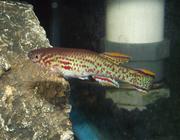
Species: Aphyosemion gardneri
-
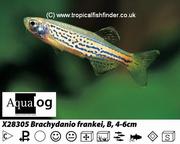
Species: Danio frankei
-
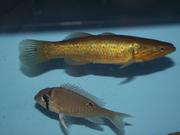
Species: Eleotris margaritacea
-
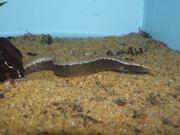
Species: Macrognathus circumcinctus
-
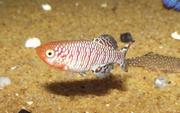
Species: Nothobranchius rachovii
-
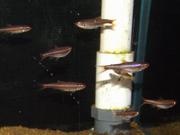
Species: Notropis chrosomus
-
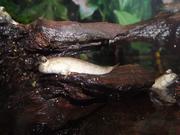
Species: Periophthalmus 'Indian dwarf'
-
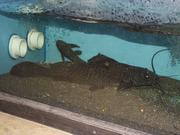
Species: Perrunichthys perruno
-
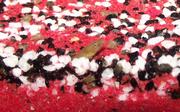
Species: Pisodonophis boro
-
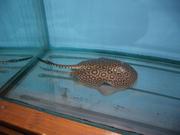
Species: Potamotrygon motoro
-
.jpg)
Species: Shop floor
Visit to Maidenhead Aquatics@ Bracknell
The Bracknell branch of Maidenhead Aquatics is a medium-sized store that offers a good mix of community fish, cichlids, oddballs, marines, plants and pond fish. What impressed us on our visit was the number of specialist fish being sold alongside the community tank staples, including rarely-seen gobies, several different spiny eel species, a few killifish, and a good variety of Apistogramma dwarf cichlid species.
Maidenhead Aquatics at Bracknell is on the Forest Road (B3034) just east of the village of Binfield, about two miles from the centre of Bracknell. Shoppers coming by car can park within the Wyevale Garden Centre. Shoppers coming by public transportation can use Bus 153 from Bracknell Bus Station or else walk from Bracknell Railway Station, the journey taking about 25 minutes by foot. For more about the store, visit its page elsewhere on Tropical Fish Finder.
Danios
Danios are often described as the best schooling community fish for beginners, a point highlighted on the tanks at Maidenhead Aquatics, Bracknell. They are very adaptable in terms of water chemistry and will tolerate occasional water quality problems rather better than most other schooling fish. About the only demands they place on the aquarist are these: that they should be kept in groups of six or more specimens; that they are not kept too warm (20-25 degrees C is ideal); and that they are given sufficient space to swim around freely (an aquarium length of at least 60 cm is recommended for the smaller species, 120 cm or more for the 'giant' species). Do beware that danios are lively, jumpy fish that cannot be kept in open-topped tanks!
We were delighted to see several different danio species on sale on our visit to Maidenhead Aquatics, Bracknell. One of the most eye-catching was the delightful little Burmese Gold Ring Danio, Danio tinwini. With a maximum length of just 3 cm when mature, this species is smaller than the more common species like the Zebra Danio, and this makes it easier to keep large groups of them without overstocking the tank. Keep in groups of ten or more for best results, and these fish constantly dart around the tank, the males sometimes squabbling but generally not doing any harm to one another. Both sexes are pale silvery fish marked with gold-rimmed black spots along their flanks and black spots on the fins. As is often the case with danios, males and females look similar, but mature females tend to be more robust around the abdomen.
The Zebra Danio, Danio rerio, is the species most highly recommended to beginners because of its hardiness, adaptability, and the ease with which it can be bred. Alongside the standard form we were glad to see the equally easy to keep Leopard Danio, Danio rerio 'frankei'. Whereas the standard Zebra Danio has longitudinal purple and gold stripes along its flanks, the Leopard Danio instead has irregular rows of purple spots against a golden background. It's a superb fish, and like the Zebra Danio, may be kept in both low-end tropical tanks or cooler subtropical tanks down to about 18 degrees C. While basically peaceful, both of these danios are boistrous and sometimes bully smaller fish that occupy the same upper level part of the tank, most notably White Cloud Mountain Minnows but also other, smaller Danio species.
A much less often seen species on sale at Maidenhead Aquatics, Bracknell, was the Hikari Danio, a so-far undescribed Danio species that comes from Burma and may get as large as 7 cm but is usually quite a bit smaller. It's an odd species among danios in being strongly sexually dimorphic. Males are silvery with a broad metallic green-blue band that runs from behind the eye onto the tail fin and they also have yellow fins. Females have a darker blue band on their flanks but their fins are much less strongly coloured than those of the males. In the past the males and females were often sold as different species. This is a peaceful, schooling species that makes a nice addition to the community tank when kept alongside tankmates of similar size.
The Glowlight Danio, Danio choprae, is another small danio species that only gets to about 3 cm in length. As their name suggests, these fish have luminour copper-coloured markings on their bodies that resemble those of the Glowlight Tetra Hemigrammus erythrozonus. They have a copper band running along the flank and a series of violet vertical bands, but males tend to be more strongly coloured than the females. In small groups and in small tanks males of this species can be aggressive, so it is important to keep Glowlight Danios in large groups of ten or more specimens. Their subtle, glowing colours work best in shady, well-planted tanks with a dark substrate.
Other Schooling Fish
We saw lots of other interesting schooling fish on our trip to Maidenhead Aquatics, Bracknell. One of the most surprising species was the Rainbow Shiner, Notropis chrosomus, a minnow-like fish from the southeastern United States. Normally found in clean, shallow streams where the water is well-oxygenated this isn't a difficult species to maintain in aquaria provided water quality is high. As its distribution suggests, this is a warm-temperate rather than tropical fish, but in practise the Rainbow Shiner can do well across a broad temperature range from 15-25 degrees C, though higher temperatures will shorten its lifespan. A good choice for a large, unheated aquarium decorated with a few plants around the edges but with plenty of swimming space at the front. Colours are exceptional, with vivid shades of violet, orange and red present along the flanks depending on the ambient lighting. Maximum length is 8 cm, though most specimens stay considerably smaller.
L-number Catfish
The variety of catfish on sale at Maidenhead Aquatics, Bracknell, was exceptional, including several whiptail cats, lots of Corydoras, some nice Asian and African species, and a few predatory types including some Gulper Catfish and a Zebra Shovelnose Catfish. But the stars of the show were undoubtedly the L-numbers, the famous suckermouth catfish from South America that aquarists often call 'plecs'.
The variety on sale including Tiger Peckoltia, L002; Sunshine Plecs, L014; Scarlet Plecs, L025; Peppermint Plecs, L030; Zebra Plecs, L046; Starlight Bristlenose Cats, L059; Pseudo Zebra Plecs, L129; Snowball Plecs, L142 and Vampire Plecs L240.
We also saw a pair of superb Hemiancistrus species on sale, the Blue Phantom Plec, L128, Hemiancistrus sp, and the Green Phantom Plec, L200, Hemiancistrus subviridis. Both species get to about 15-20 cm in length, but whereas the Green Phantom Plec is yellowy-green with white spots, the Blue Phantom Plec is bluish, the precise shade being quite variable depending on the specimen. Both fish have a luminous sheen that is best appreciated in a shady, well-planted aquarium. Hemiancistrus are relatively undemanding fish but they do need water that is well-oxygenated and not too warm, 22-25 degrees C being recommended. They are particularly good additions to tanks with moderate to strong water current, as would be required for systems containing medium-sized characins and barbs. They are territorial towards one another but not especially aggressive. Diet tends towards small invertebrates rather than plant material, though they do eat green algae.
Gobies
The Irian Golden Nugget Gudgeon, Eleotris margaritacea, is a euryhaline sleeper goby that occurs across a large part of the Indo-Pacific region from West Africa to Australia. Adults are only found in freshwater streams, but after the eggs hatch the fry drift downstream to the sea where they develop in the plankton. Adults are greenish-gold and quite robustly built, and have a maximum length of about 20 cm. As with other sleeper gobies they are omnivorous consuming a large variety of prey as well as some algae and plant material. They are opportunistic predators so shouldn't be kept with smaller tankmates, but are otherwise territorial rather than aggressive.
We saw several brackish water goby species on sale, including what appeared to be one of the non-amphibious mudskippers, Pseudapocryptes elongatus, being sold as the Indian Banded Fairy Goby. This brackish-water species tolerates freshwater for a while, and was being sold as a freshwater fish, but will not stay healthy in freshwater indefinitely. It needs to be maintained at SG 1.005 upwards, and though it doesn't climb out of the water much, does like to rest in shallow water with its eyes protruding above the waterline. Pseudapocryptes elongatus is mostly an algae-eater in the wild, so should be offered things like algae wafers and spirulina flake. Adults can reach lengths of 20 cm or more, but that is uncommon. Curiously, this species is farmed as a food fish but only occasionally do specimens end up in the aquarium trade.
Maidenhead Aquatics, Bracknell, also offered some true mudskippers, the so-called Indian Dwarf Mudskipper, likely Periophthalmus novemradiatus. This species gets to about 5 cm or so on length and exhibits attractive silvery-blue speckles on its flanks as well as reddish patches on its dorsal fins. Males and females are similar, but males have taller first dorsal fins and may be more colourful. As with all mudskippers, these must be kept in brackish or marine conditions, not freshwater. A tank with a tight-fitting hood with no clear openings is essential because they are excellent climbers and will escape through any cracks they find. Mudskippers spend little time underwater, so a water depth of 8-10 cm is adequate. On the other hand, the dry land part of the tank needs to be as complex as possible, with lots of sand banks, smooth rocks, bogwood, and plastic plants used to create a mangrove forest arrangement that allows the mudskippers space to explore. Males are very territorial and may fight, but males of this species are far less psychotic than the West African Mudskipper, Periophthalmus barbarus, and in fact Indian Dwarf Mudskippers do rather well in groups of six or more specimens.
Other Oddballs
We saw several eels on our visit, including no fewer than four spiny eels, the Zebra Spiny Eel (Macrognathus zebrinus), the Tyre-track Eel (Mastacembelus armatus), the Half-banded Spiny Eel (Macrognathus circumcinctus), and the Tanganyikan Spiny Eel (Macrognathus ellipsifer). But surely one of the oddest fish in the hobby is the Rice Paddy Eel, Pisodonophis boro, a species found all along along coastal habitats from South Africa to Polynesia. They can reach lengths of up to 100 cm but remain very slender, almost bootlace-like. As their distribution implies, they are tolerant of salt water and are frequently found in brackish water habitats such as estuaries, but they may also be found in freshwater habitats as well, including rice paddies. Very little is known about their long-term requirements in captivity. In the wild they are predators, consuming a variety of prey including crustaceans and smaller fish. Take care not to choose bite-sized tankmates! They are confirmed burrowers, and must be kept in tanks with a soft, sandy substrate. As always with eels, there is a strong risk of escape through any tiny crack in the hood, so aquarists planning on keeping these interesting fish should plan accordingly and bung up any small openings with mesh or filter floss.
Several killifish species were available at Maidenhead Aquatics, Bracknell, on the day we visited. The species on sale included two African species, Nothobranchius rachovii and Aphyosemion gardneri (more correctly named Fundulopanchax gardneri according to some authorities). Nothobranchius rachovii comes from Southern Africa and exhibits strong sexual dimorphism. Females are rather drab little fish but the males are red with lots of bright blue speckles on their flanks and fins, as well as an orange and black fringe to their tail fin. Maximum length is 5 cm, but the males are quite aggressive towards one another, so the species is best kept in a harem situation with one male alongside two or more females (if kept as pairs, the females tend to get harassed unless the aquarium is spacious and provided with lots of hiding places). As is often the case with annual killifish, Nothobranchius rachovii is not well suited to community tanks. If nothing else, the aquarist will want to breed these fish, and that won't be possible alongside tankmates liable to eat the eggs. Nothobranchius rachovii is not particularly demanding in terms of care but does best in neutral water that is neither too hard nor too soft, and like other annual killifish, should not be kept too warm, 22-24 degrees C being recommended.
By contrast the non-annual West African species Aphyosemion gardneri is a viable addition to a community of gentle fish that enjoy similar conditions. Again, this species is sexually dimorphic, females being essentially green-grey while the males exhibit a complex pattern of red, yellow, blue and green speckles on their body and flanks. Not fussy about water chemistry provided extremes are avoided, but shouldn't be kept too warm, 22-25 degrees C being best. As such, they're good companions of low-end tropical species that stay at the bottom of the tank, for example Corydoras or Apistogramma. On the other hand, the males are territorial and not only fight amongst themselves but will also chase other surface-swimming fish. Aphyosemion gardneri is potentially predatory, and with a body length of over 6 cm can pose a threat to very small tankmates. This species is very jumpy and should not be kept in an open aquarium!
For aquarists after something a bit challenging, the Borneo Redline Halfbeak Hemirhamphodon tengah might be worthwhile. These halfbeaks are tiny, getting to only 3-4 cm in length, and should be kept in a species aquarium with soft, acidic water and lots of floating plants and moss. Like many other blackwater fish they usually fail to thrive in hard, alkaline conditions. Although delicate, populations of these have been maintained by Pete Liptrot at the Bolton Aquarium, where their unusual breeding behaviour has been observed. After mating in the same way as other freshwater halfbeaks, with internal fertilisation by the male using a modified anal fin, the female lays rather large eggs among floating plants.
At the other end of the size range were two different stingray species, Potamotrygon henlei and Potamotrygon motoro. Widely considered among the most challenging freshwater fish to maintain, stingrays are extremely beautiful animals but do need a significant investment to stay healthy. Stingrays need tanks at least 4 times as long as the disc width of the fish and 2 times as wide from front to back as the disc width of the fish. Given that a smallish species like Potamotrygon henlei will still reach a disc width of 40 cm, that means a tank no less than 160 cm long and 80 cm from front to back, and that's the absolute minimum for just one specimen, let along a collection of one or more rays alongside suitable tankmates!
Our last fish for this report is a true tank-buster Perrunichthys perruno. This beautiful South American catfish has been adopted by the staff at Maidenhead Aquatics, Bracknell but they'd like to find him a home where he can be more properly appreciated. Their specimen isn't far off the maximum length of 60 cm reported for this species, so obviously needs a very large aquarium to feel at home. Despite its large size, this fish is predatory rather than aggressive, and gets along well with dissimilar fish of suitable size, such as Oscars and large Plecs. As with other pimelodid catfish it isn't difficult to keep provided water quality is good, but does appreciate slightly cooler than usual conditions, 22-25 degrees C being recommended. If you think you can find a home for this lovely catfish, give the manager at Maidenhead Aquatics, Bracknell, a call!
Other fish articles:
Other fish articles you may be interested in are listed below, click an article for full details.
-
FISH ARTICLE
-
FISH ARTICLE
-
FISH ARTICLE
-
FISH ARTICLE






